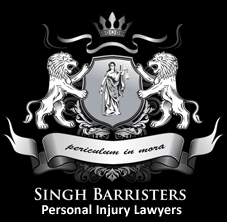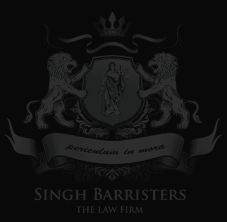Brampton personal injury lawyers regularly deal with cases where people have been injured in motor-vehicle accidents or slip and fall accidents.
Such accidents can leave a trail of destruction in their wake, imposing enormous physical, financial and emotional consequences on victims and their families.
Unfortunately, when a thorough investigation is conducted into such apparent “accidents” it’s revealed that they could have been prevented. Mishaps usually occur due to someone’s fault or negligence. Victims and their families are entitled to seek compensation and their claims will be accepted based on the proof, nature and severity negligence, extent of injuries, the impact on their lives and their eligibility.
There are two methods of achieving compensation: statutory benefits provided under government/federal regulations/highway act etc (benefits are paid out by your own insurance-company) and by filing a personal injury suit against the at-fault party (at-fault party’s insurer who makes the settlement).
Out of Court Settlement
Studies show that almost 95% of personal injury claims are settled out-of-court, although the trial option is available at all times. Only about 2% of suits actually go through to trial and there could be compelling reasons for this. Once the intent to sue is conveyed to the at-fault party, they may offer a settlement.
Settlement can happen before, during and after the suit is filed, before the trial starts, via a step-by-step process. In many cases, settlement is possible during and after trial too. Settlements are achieved through negotiations conducted among all parties involved and their legal representatives. Mediation process is also available, conducted usually by a retired lawyer/judge.
There is no need to settle or give an opinion at these conferences. However, once a settlement is reached or a verdict is pronounced at trial, it becomes final. When you settle with the insurers, you actually waive your rights to pursue any further compensation.
Pros and Cons of Settling
The difficulty in proving the expenditure, proof of injury, impact of the injury etc, related to the case, the length of the process and the financial status of the claimant are important factors that compel out-of-court settlements.
Regarding the plus points of settling, time and speed are the most important reasons to settle out-of-court. You and your family can “get on with your life.” Settlement of medical bills, repairs to property, financial security for the family in case you’re unable to work are compelling reasons.
Trials can be long-drawn-out and expensive while verdicts can be unpredictable and risky. Court and filing fees, fees for experts/witnesses, etc can be very high.
Emotionally, it could take a toll on you/your family. Settlement gives closure and security.
On the flip side, many people truly want “their day in court,” especially when there are ethical/emotional issues involved. The amount of compensation offered in settlement may be meager. In many cases, the offer of settlement could indicate that the defense case is weak, hence it may be worthwhile to take the case to trial. In some cases, judges award huge punitive damages which you can’t get if you settle out-of-court.
Finally, an experienced, ethical, reputed and knowledgeable 24×7 accident injury lawyer can provide the best advice, assistance and advocacy.


